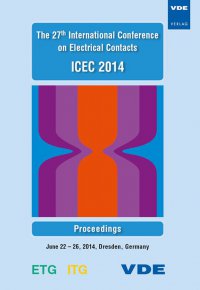Fundamental Arc Characteristics at DC Current Interruption of Low Voltage(<500V)
Conference: ICEC 2014 - The 27th International Conference on Electrical Contacts
06/22/2014 - 06/26/2014 at Dresden, Deutschland
Proceedings: ICEC 2014
Pages: 6Language: englishTyp: PDF
Personal VDE Members are entitled to a 10% discount on this title
Authors:
Sawa, Koichiro; Tsuruoka, Masatoshi; Yamashita, Shoichi (Standardization Committee on Safety of Switches for Appliances for DC Power Distribution System, Nippon Electric Control Equipment Industries Association (NECA), Tokyo, Japan)
Abstract:
Various DC power supply systems such as photovoltaic power generation, fuel cell et al have been gradually spreading, so that DC power distribution systems are expected as one of energy-saving technologies at houses and business-related buildings as well as data centers and factories. Under such circumstances switches for electric appliances are requested to interrupt DC current safely in DC power systems (DC 300-400V). It is well-known that DC current is much more difficult to make interrupted than AC current with current-zero. In this paper a model switch is developed and fundamental characteristics of DC current interruption in a resistive circuit is experimentally and theoretically examined. Consequently arc duration is found to be approximately a function of interrupted power rather than source voltage and circuit current. In addition arc length at its extinction is obtained by the observation of a high-speed camera. Then the length is found to be decided only by interrupted power like the gap length, independent of separation velocity. Further, from these results it can be made clear that the arc form becomes arc-shaped at its extinction when the interrupted power is larger than about 500W.


